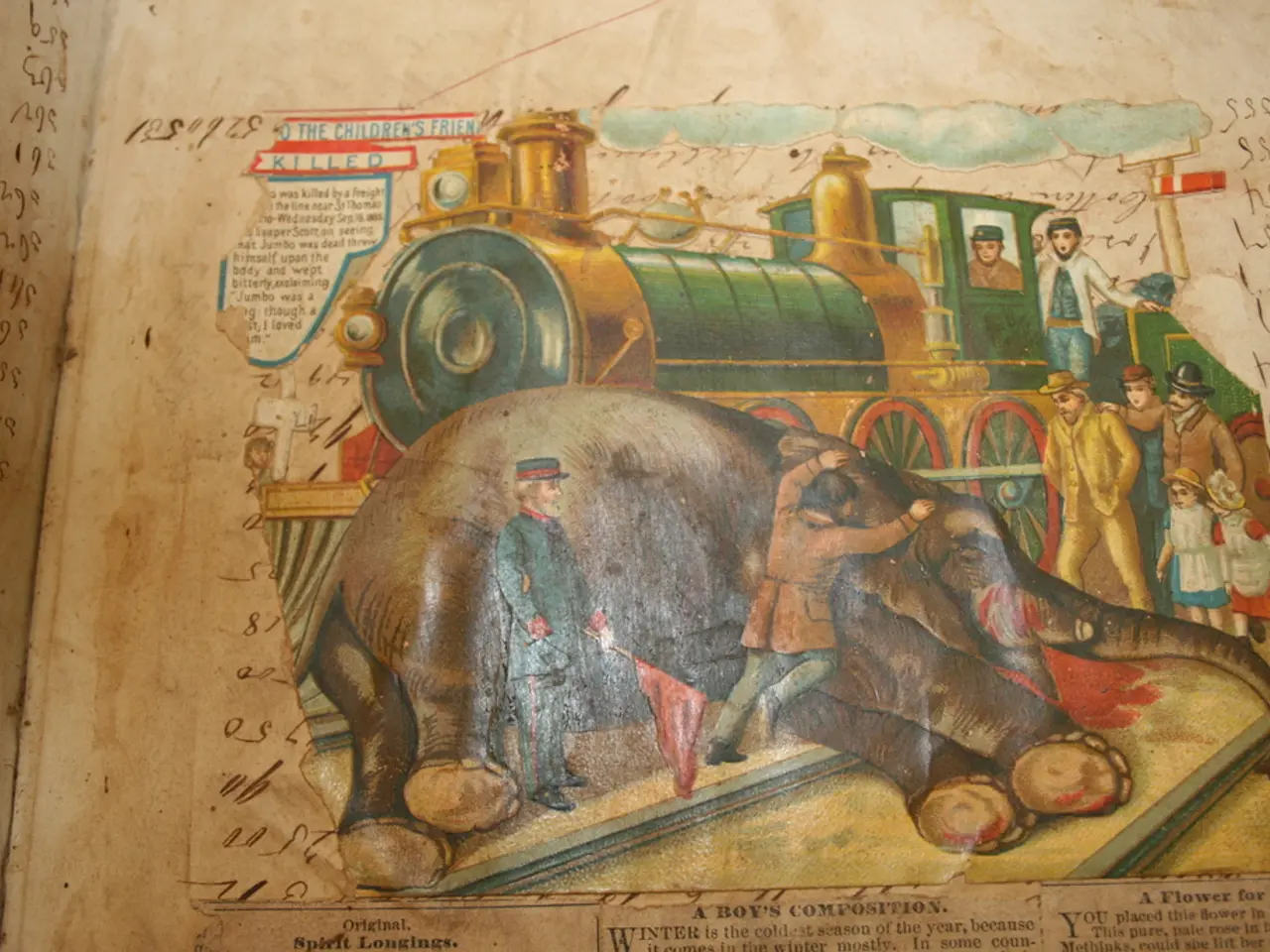Unraveling the Turmoil of the 1877 Great Railroad Strike, America's Initial Multi-State Labor Uprising
The Great Railroad Strike of 1877, a significant event in American labour history, took place across the country and saw over 100,000 workers participate in protests. The strike, which began in response to wage cuts and poor working conditions, briefly brought America's major railroads to a halt.
The economic depression of 1873, known as the Panic of 1873, had caused widespread financial instability and reduced investment, severely impacting the railroad industry. This, combined with the strikers' grievances, ignited the strike.
The strike led to increased support for the Posse Comitatus Act of 1878, which limited the president's ability to deploy U.S. federal troops to participate in civilian law enforcement. President Hayes, in a proclamation on July 18, 1877, warned against "aiding, countenancing, abetting or taking part in unlawful proceedings."
Despite the uproar and protests, the strike essentially ended by August 1877, with no major wins for the striking workers. Workers did not see immediate wage or working condition improvements. However, the strike brought the issue of labour rights to the forefront of public attention.
In the aftermath of the strike, unions became more common and more organized. Companies like the Baltimore and Ohio (B&O) responded by introducing measures to support their employees. By 1884, B&O had a pension plan for its employees, and in 1880, B&O introduced the Baltimore and Ohio Employees Relief Association to provide benefits to employees and their families in case of injury, sickness, or death.
Some unexpected physical reminders of the 1877 strikes are the many armories built throughout the U.S. for the National Guard in the event of future social unrest. These armories, now repurposed as museums or event venues, serve as ever-present reminders of the first multi-state worker uprising in the U.S. - and the "second American Revolution" that wasn't.
Approximately 1,000 people had been arrested during the strike, and tragically, approximately 100 people had died during the strike, many of whom were strikers. The Great Railroad Strike of 1877 remains a crucial episode in American labour history, marking a turning point in the struggle for workers' rights and the evolution of the American labour movement.
Read also:
- Peptide YY (PYY): Exploring its Role in Appetite Suppression, Intestinal Health, and Cognitive Links
- Toddler Health: Rotavirus Signs, Origins, and Potential Complications
- Digestive issues and heart discomfort: Root causes and associated health conditions
- House Infernos: Deadly Hazards Surpassing the Flames








